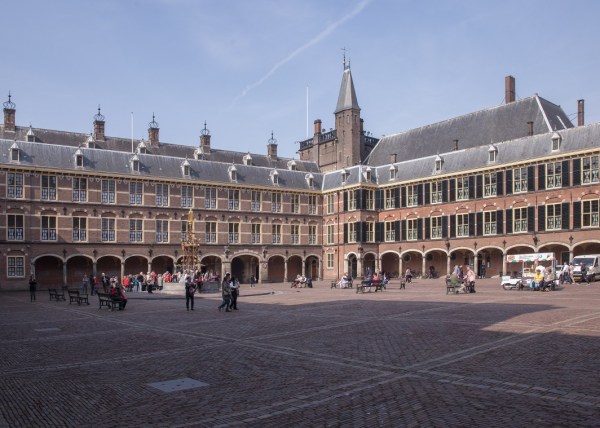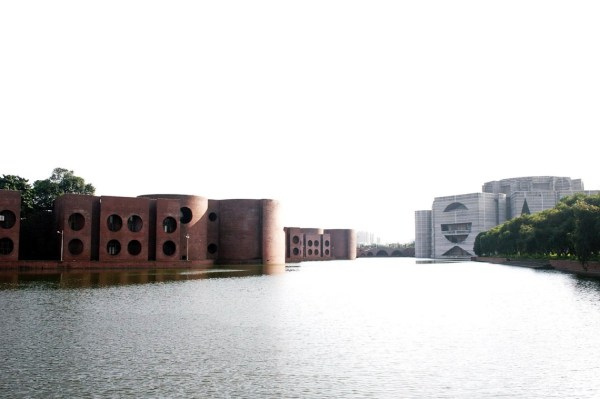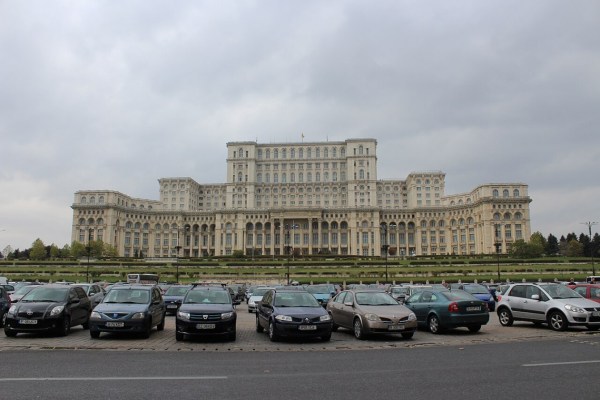Inauguration of new Parliament: Some other magnificent Parliament buildings
While Parliament buildings serve a specific purpose – to house the country's top legislative body – they are also symbolic of a country's values and might. Here is a look at some of the world's grandest and most beautiful buildings housing their country's supreme legislative body.
 The new Parliament building is part of the revamped Central Vista project, the construction of which started in 2019. Built at an estimated cost of Rs 1,200 crore, the new Parliament has three storeys and a built-up area of 64,500 sqm. (Express photo)
The new Parliament building is part of the revamped Central Vista project, the construction of which started in 2019. Built at an estimated cost of Rs 1,200 crore, the new Parliament has three storeys and a built-up area of 64,500 sqm. (Express photo) Prime Minister Narendra Modi inaugurated India’s new Parliament building on Sunday morning. In his maiden speech from the new Lok Sabha chamber, Modi said, “From panchayat bhawan to Sansad bhawan, our inspiration is the development of our country and its people. Today, as we are proud of the construction of this new Parliament, it also gives me immense satisfaction when I think about the construction of homes for 4 crore poor people and 11 crore toilets in the country in the last nine years”.
The government on Friday (May 26) released the first look of the new Parliament building, built adjacent to the existing British structure. “The new Parliament building will make every Indian proud. This video offers a glimpse of this iconic building,” PM Modi tweeted alongside a short video snippet of the new building.
While Parliament buildings serve a specific purpose – to house the country’s top legislative body – they are also symbolic of a country’s values and might. We take a look at some of the world’s grandest and most beautiful buildings housing their country’s supreme legislative body.
Binnenhof, The Hague
Netherlands’ Binnenhof is essentially a complex of buildings located in the city of The Hague. Built in the 13th century to serve as a residence of the counts of Holland, the most eye-catching part of it is the Ridderzaal (Knights’ Hall). Binnenhof became the seat and symbol of the Dutch Republic in around 1585, when the States-General, along with other bodies of the Dutch Republic’s central government, established themselves in the complex. Today, it houses the meeting place of both houses of the States General of the Netherlands, as well as the Ministry of General Affairs and the office of the Prime Minister of the Netherlands.
 Binnenhof, The Hague (Photo: Wikimedia Commons)
Binnenhof, The Hague (Photo: Wikimedia Commons)
National Parliament House, Dhaka
Designed by the famous architect Louis Kahn, Bangladesh’s National Parliament House is one of the largest legislative complexes in the world. Its commission was given in 1962 and it took two decades to finish its construction — the 1971 Bangladesh Liberation War halted the work for some time. A symbol of democracy and pride for the Bengali people, the building has a monumental presence. The National Parliament House consists of nine closely connected concrete and limestone blocks, including a prayer hall and passageways that encircle the octagonal parliamentary chamber.
 National Parliament House, Dhaka (Photo: Wikimedia Commons)
National Parliament House, Dhaka (Photo: Wikimedia Commons)
The Capitol, Washington DC
Completed in 1800, the Capitol is widely recognised as a symbol of American democracy, where the Congress meets. Spread over 1.5 million square feet, comprising over 600 rooms, and miles of corridors, the building is a fine example of 19th-century neoclassical architecture. Its design takes inspiration from ancient Greece and Rome structures. The Capitol has been expanded numerous times and the most notable addition to it is its magnificent white dome. Built between 1855 and 1866, the dome has a height of 88 metres and overlooks the city of Washington.
 The Capitol, Washington DC (Photo: Wikimedia Commons)
The Capitol, Washington DC (Photo: Wikimedia Commons)
The Great Hall of the People, Beijing
The decision to construct the Great Hall of the People was taken in August 1958, when the Communist Party ordered to build 10 ‘Great Buildings’ to mark the 10th anniversary of the People’s Republic of China. More than 30,000 people, including 7,000 technicians and workers from across the country worked on the structure, which got ready within a period of ten months and was inaugurated in September 1959. The Great Hall of the People, located west of Tiananmen Square, comprises the State Banquet Hall which can accommodate 5,000 diners at a single sitting, the Great Auditorium with a room for 10,000 delegates, and the office building of the Standing Committee of the People’s Congress of China.
 The Great Hall of the People, Beijing (Photo: Wikimedia Commons)
The Great Hall of the People, Beijing (Photo: Wikimedia Commons)
The National Assembly Complex, Abuja
Covering an area of 40,000 sq m, Nigeria’s National Assembly Complex was opened in 1999 after 30 months of construction. The building, which houses the federal government of the country, consists of a ceremonial plaza, a distinctive green dome-shaped roof and two chambers which are serviced by a central atrium. Built by using local materials such as Nigerian granite and resources, the National Assembly Complex features a precast curtain facade along with shaded windows that protect it from the direct impact of sunshine.
 The National Assembly Complex, Abuja (Photo: Wikimedia Commons)
The National Assembly Complex, Abuja (Photo: Wikimedia Commons)
The Palace of Parliament, Bucharest
Constructed between 1984 and 1997, the Palace of Parliament in Romania is one of the world’s biggest and heaviest buildings — it’s 276 ft tall and 4.10 million tonnes in weight. The behemoth building was conceived by Communist dictator Nicolae Ceausescu and a team of roughly 700 architects led by Anca Petrescu, who was just 32 years old when the construction began.
Reports suggest it took between 20,000 and 100,000 people, including soldiers, political prisoners and volunteers to finally realise the Palace of Parliament. Its vast marble halls comprise the Senate and Chamber of Deputies as well as museums, a conference centre and eight underground levels and a bunker room with thick concrete walls said to be impervious to radiation — Ceausescu feared a nuclear war, hence, the bunker room was connected to the main state institutions through 20km of tunnels.
 The Palace of Parliament, Bucharest (Photo: Wikimedia Commons)
The Palace of Parliament, Bucharest (Photo: Wikimedia Commons)
The Reichstag, Berlin
Inaugurated in 1894, the Reichstag was the headquarter of the Weimar Republic (1919-33) before it sustained severe damages in 1933 shortly after Adolf Hitler was sworn in as Chancellor of Germany. It was also damaged in 1945, during World War II, when Russia attacked Berlin. The Reichstag was restored and modernised during the 1960s and then went through renovation in the 1990s after which it became home to the parliament of the reunified Germany. During the renovation, a huge operatic steel and glass dome was also added to the structure.
 The Reichstag, Berlin (Photo: Wikimedia Commons)
The Reichstag, Berlin (Photo: Wikimedia Commons)
Photos





- 01
- 02
- 03
- 04
- 05

































